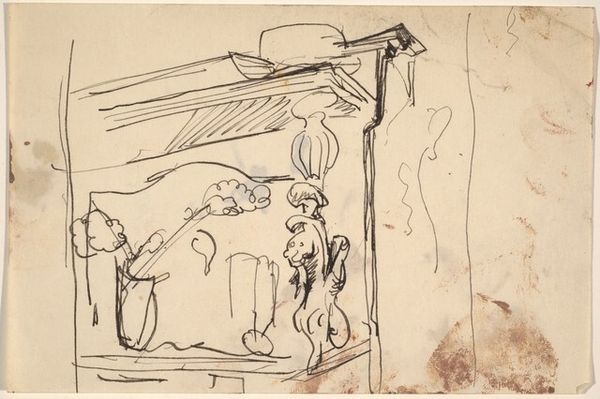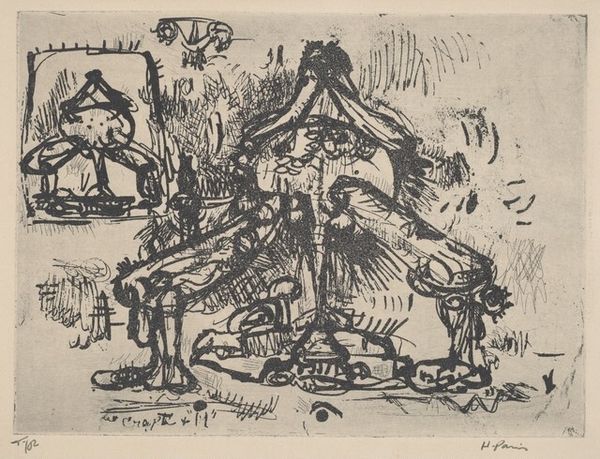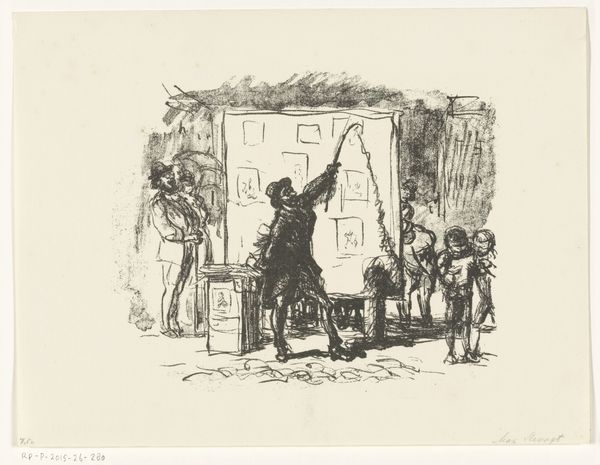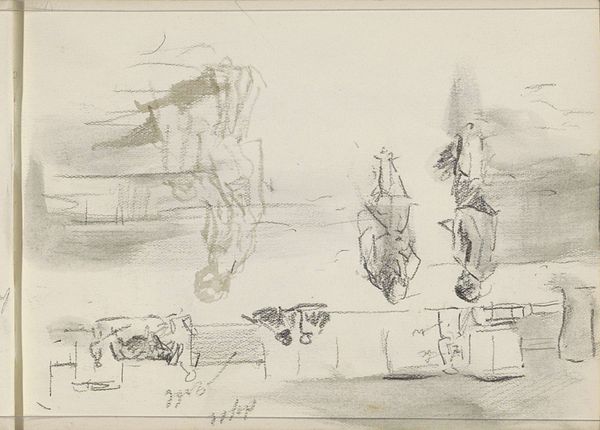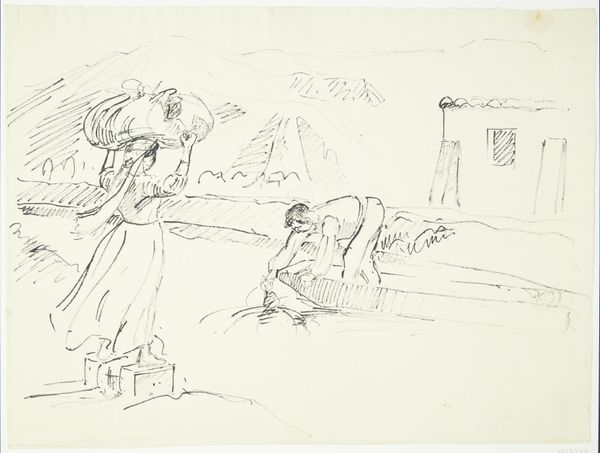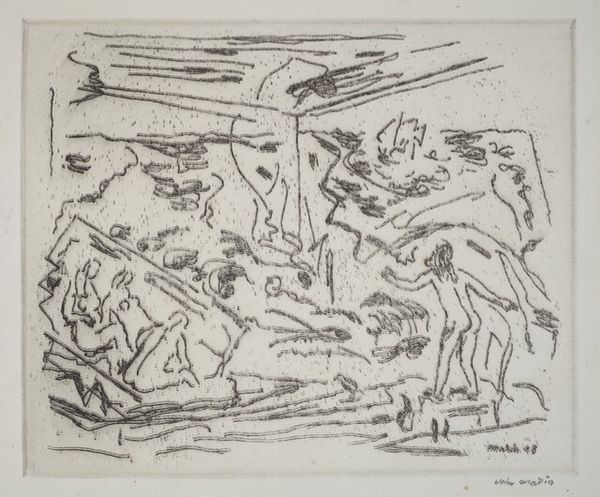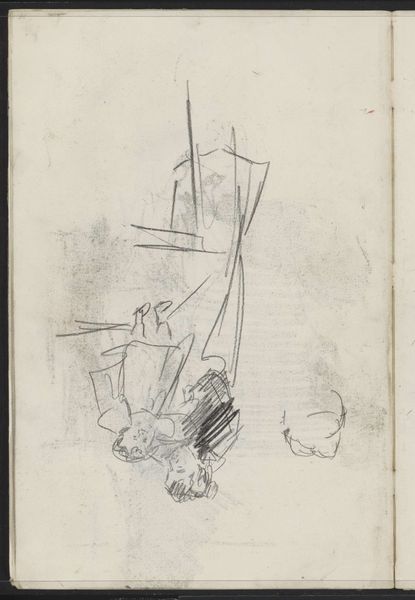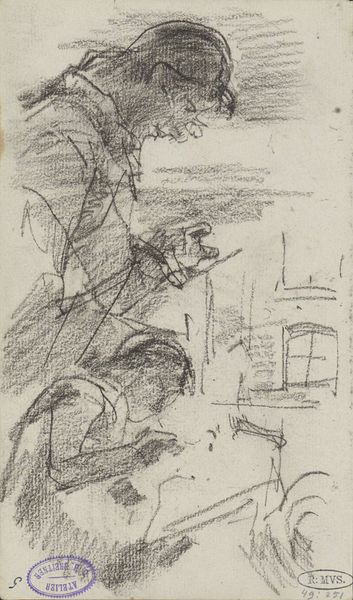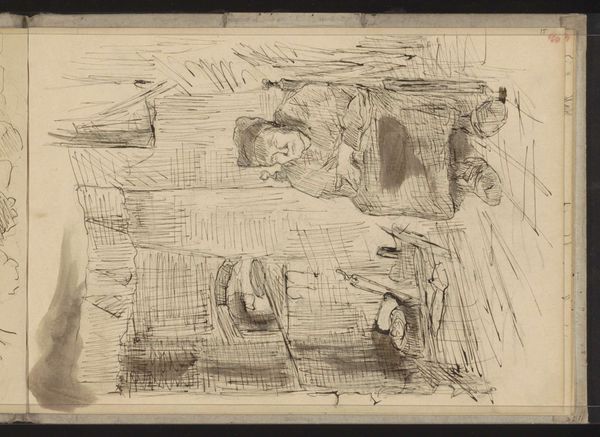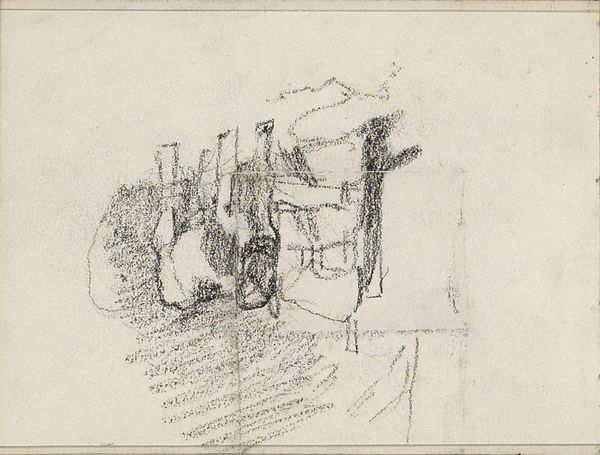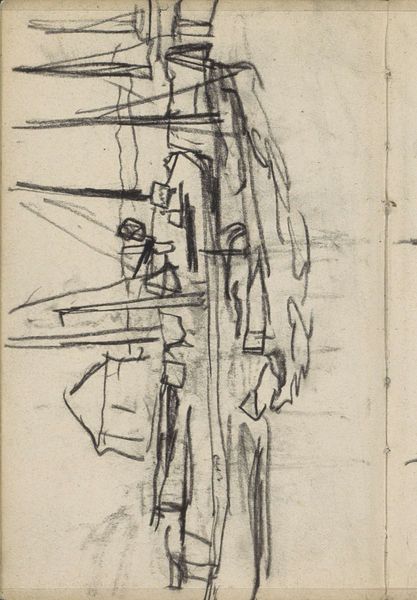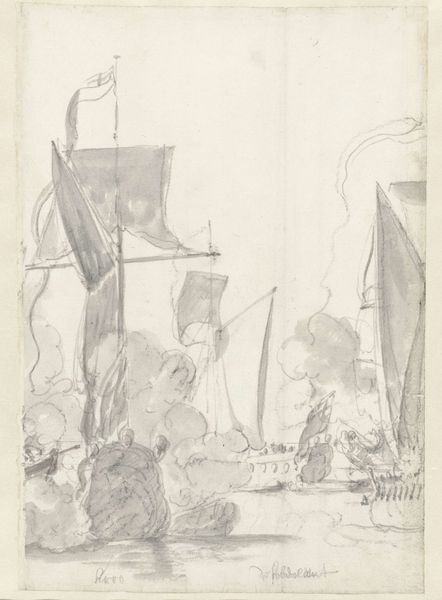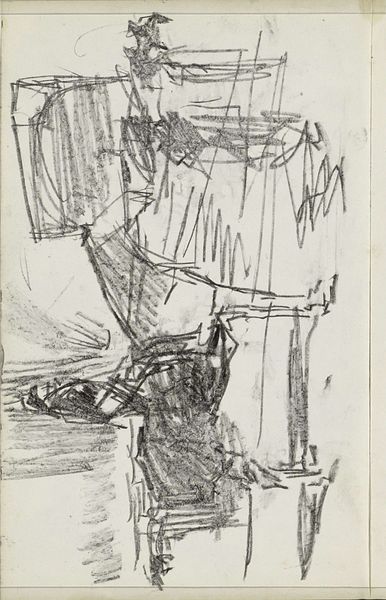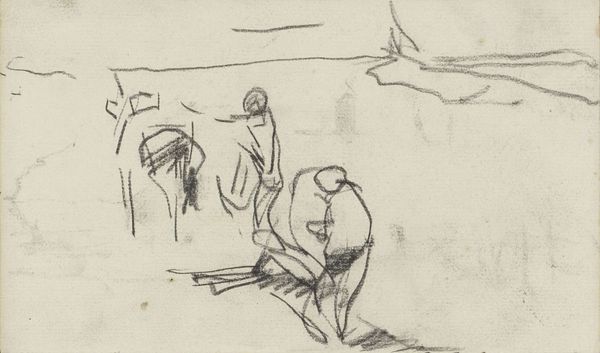
drawing, ink
#
drawing
#
pen sketch
#
pencil sketch
#
figuration
#
ink
#
line
#
surrealism
Dimensions: height 175 mm, width 215 mm
Copyright: Rijks Museum: Open Domain
Curator: Welcome. Before us is a pen and ink drawing by Pablo Picasso titled "Reproductie tekening Picasso Au bords de la mer," created in 1938. The title, which translates to "Reproduction Drawing Picasso By the Sea," immediately situates us, doesn't it? Editor: It does, although that title feels almost… ironic given the drawing's utterly dreamlike quality. I'm struck by the disjunctive, almost violent relationships between the forms. It's rendered with such a stark linearity. The black lines dancing on a blank surface certainly unsettles the viewers. Curator: Indeed. Its social context is important to consider. This was created on the eve of World War II. Picasso had already witnessed the horrors of the Spanish Civil War. This piece reflects the tension and fractured reality of a world edging towards chaos. His personal life was turbulent too; the drawing dates from the period of his deepening relationship with Dora Maar and the painful ending of his bond with Marie-Thérèse Walter. Editor: Absolutely, I can see that disruption visually echoed everywhere. Take, for example, the way Picasso treats the human figure. The seated figure on the left seems confined and introspective and even the setting, a beach that offers leisure, still feels restrictive and disturbing. The limbs are rendered in an almost disjointed manner, questioning notions of wholeness. Curator: Precisely! And how the setting is also political; The beach motif could subtly allude to leisure, however, the overall sense of the picture suggests quite a claustrophobic scene. It reveals, on the whole, Picasso’s criticism toward a culture that was unable to confront political dangers lurking on the horizon. Editor: A poignant observation, to look into the state of the society via lines. And speaking of lines, I can't ignore their sheer elegance, almost classical, despite depicting these intensely surreal, fractured forms. It's as if he's trying to contain chaos within a highly controlled framework. A fascinating tension in itself. Curator: And the inclusion of a "reproduction drawing" in the title further complicates matters. It questions originality, a recurring theme in Picasso's work, playing with copies, representation, and the very act of creation. It invites us to reflect on what makes an image "authentic" amidst the reproduction age. Editor: A perfect note to end on! Thinking about the politics of representation, the violence done to form and the lines’ very expression– it adds a new richness. Curator: Indeed, a complex web of emotions and commentary etched in ink. Thanks for teasing out these critical details with me!
Comments
No comments
Be the first to comment and join the conversation on the ultimate creative platform.
